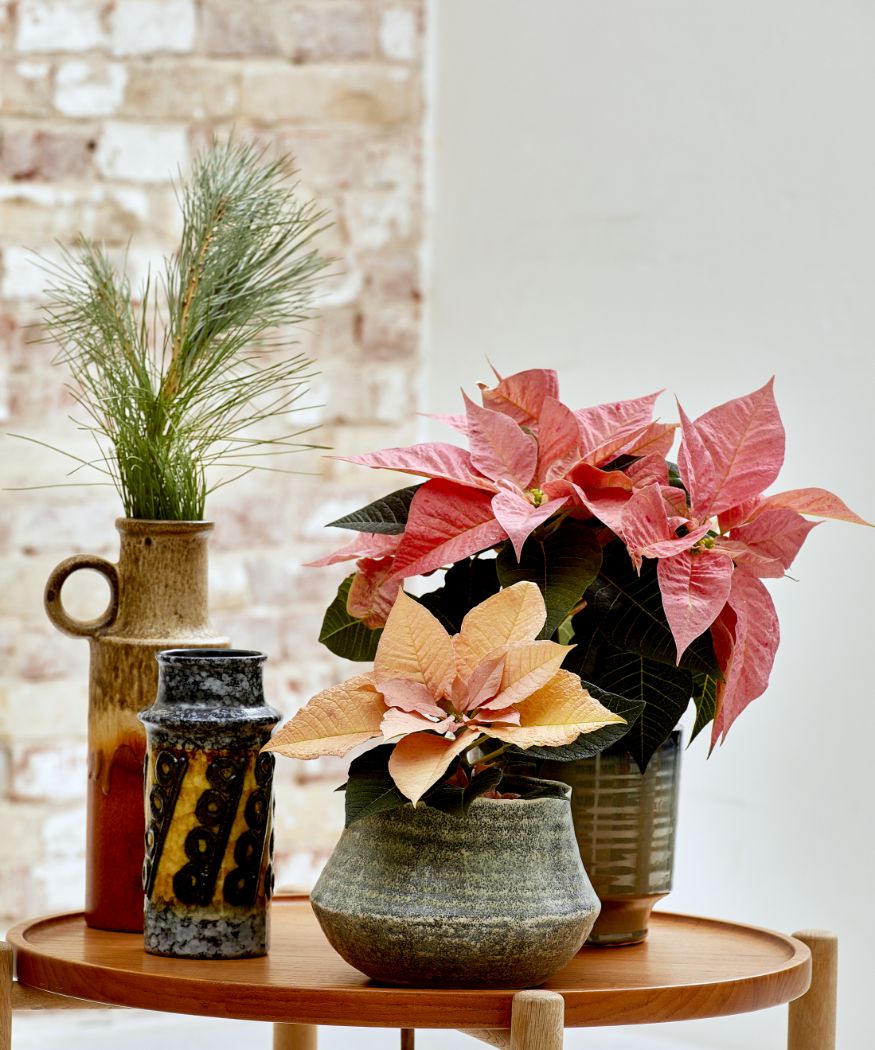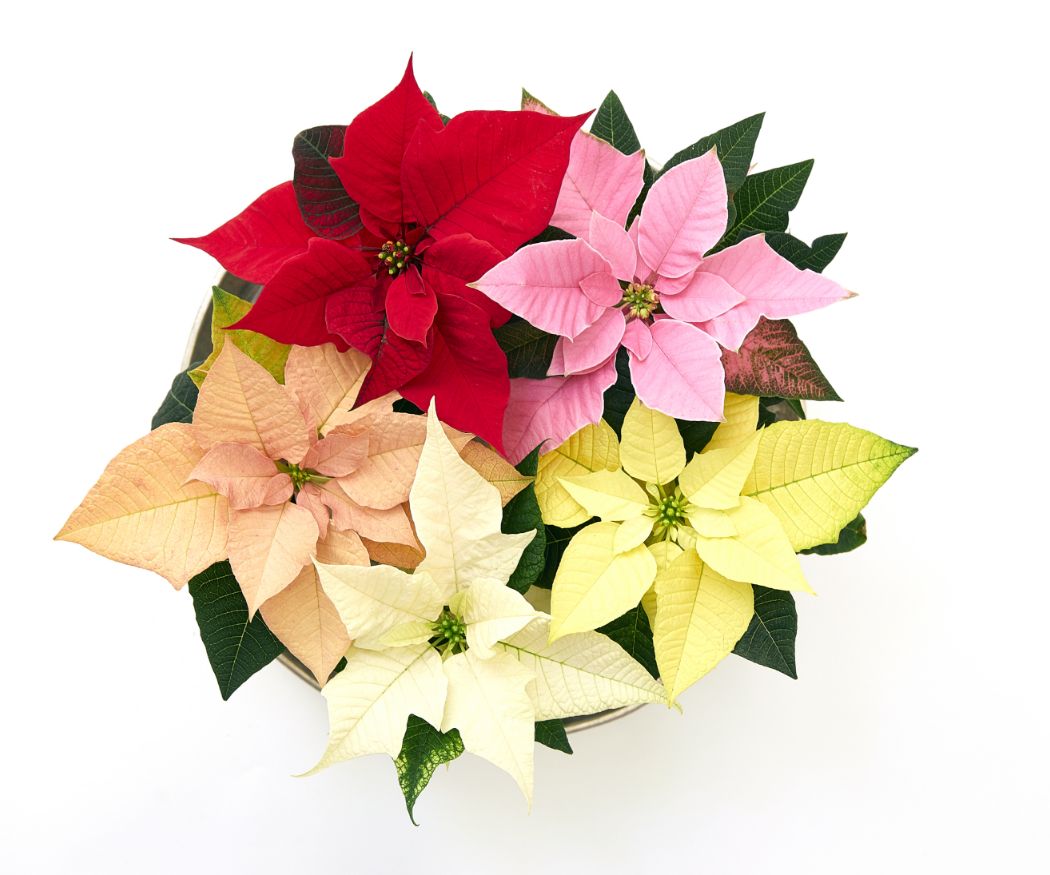- 04.07.2018 /
- Care /
- Interesting facts

Yellow leaves: Often a sign of overwatering
Yellow or dropping leaves are signs of damaged root bales. The most common cause of this is overwatering. While poinsettias can normally cope with a bit of dryness, as long as their root bale is not bone dry, they do not tolerate overwatering either.

To prevent their leaves from yellowing, poinsettias should only be watered moderately and waterlogging should be avoided at all cost. As a rule, a poinsettia should be given a small amount of room-temperature water every two to three days or bottom-watered once a week.
The amount of water needed depends on the size of the plant, while the temperature in the room and the location also play a role. You know it’s time to water when the topmost layer of substrate is dry and the plant feels light when you lift it.
If a poinsettia has been given too much water, it usually suffices to let the soil dry out for a few days, until the plant has recovered. But if the substrate is completely soaked, the only solution is to remove the plant from its pot, carefully rinse the roots and repot it in fresh potting soil.
Dropping green leaves: Often caused by cold air or draughts
If a poinsettia is losing its leaves although they are still green, it is often due to cold air or draughts. That is something this warmth-loving Mexican beauty does not tolerate at all. As soon as the temperature drops to below 12° C it is enough for poinsettias to suffer lasting damage. Therefore, one should never buy plants that have been standing in draughty doorways or outdoors at the flower shop or garden centre.
Plants should also be carefully wrapped before transporting and should be taken home as quickly as possible and unwrapped in a warm spot. Another reason for dropping leaves is darkness. Poinsettias love the light. So it is advisable to set them in a warm, sunny spot. In the wintertime in our northern latitudes direct sunlight will not hurt them. Rule of thumb: As soon as the leaves start dropping it’s often too late and the poinsettia will need replacing.
Dry, drooping leaves: Not enough water
In rooms full of dry heating air, temperatures that are too high or intensive sunlight, care must be taken to water poinsettias adequately. If they are not getting enough water, their leaves will begin to droop. In this condition the plant will usually recover if given a bit of water. The most effective way to do this is to fully immerse the root bale in room-temperature water until it is completely soaked. Then the plant should be lifted out immediately, to allow excess water to drain, and put back in its pot. Any dried stems or leaves should be trimmed back.
Spots or brown tips
If the leaves develop spots or brown tips it can be assumed that the plant is not getting sufficient nutrients. Such a deficiency in a recently-bought poinsettia is unusual, as they are normally planted in pre-fertilized soil. So additional feeding is not necessary during the first blooming period. After that, however, a bit of standard commercial fertilizer should be added regularly to the watering can.
Tip: In order to enjoy your poinsettias for as long as possible, it is advisable to spend a bit more and buy them straight from a nursery or garden centre, where the plants generally receive optimal care and are of particularly good quality.
